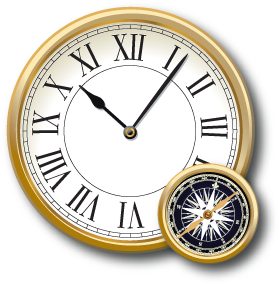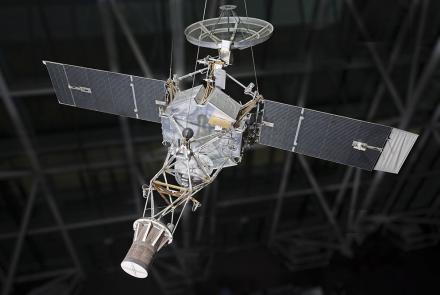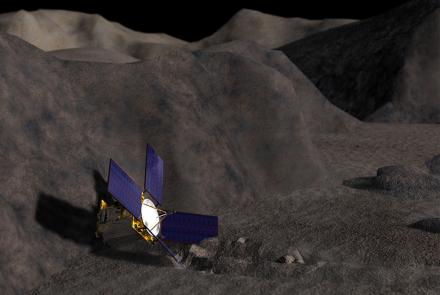Multimedia Gallery
- Innovations: Satellite
Trajectory of Mariner 10. After launch and flyby of Venus, it orbited the Sun to fly by Mercury three times.
A backup Mariner spacecraft hangs in the National Air and Space Museum’s Milestones of Flight gallery.
Beginning in 1961, U.S. manned space missions were controlled from this room, "Mercury Control," at Cape Canaveral, Florida.
This illustration depicts NEAR-Shoemaker after landing on the asteroid Eros.
Illustration of the New Horizons spacecraft as it approaches Pluto and its largest moon, Charon, in 2015.
Unflown duplicate of Pioneer 4, an early satellite designed for lunar exploration.
Wernher von Braun, John Casani, and James Van Allen inspect the Pioneer 4 satellite.
Pioneer 4 achieved enough velocity to escape Earth’s gravity, but its trajectory past the Moon was off by a wide margin.
Trajectory of Pioneer 4 from the Earth and past the Moon into orbit around the Sun.
NASA planned to place the Ranger 1 satellite into an elliptical orbit around Earth, but it never reaching its intended orbit.














